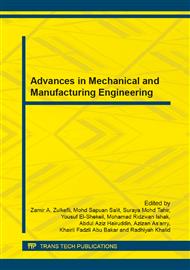p.204
p.210
p.216
p.222
p.228
p.234
p.240
p.245
p.250
Evaluation of Indoor Thermal Environment in a Radiant-Cooled-Floor Office Building in Malaysia
Abstract:
This paper presents the findings of a thermal comfort survey conducted in a tropical green office building. The building was installed with a slab-integrated radiant cooling system, which operated concurrently with an integrated variable-air-volume system. Evaluation of indoor thermal environment was made, where both objective and subjective assessments were carried out. The air temperature, air velocity, relative humidity and surface temperatures were measured by using calibrated sensors. Based on the data collected from the field assessment, the thermal comforts indices with expectancy factor were calculated. The results showed that thermal comfort parameters were within the comfort range specified in a local guideline, except for the air velocity profile. Besides, discrepancy between the Predicted Mean Vote (PMV) with expectancy factor and Actual Mean Vote (AMV) was found, which showed that the former still overestimated the thermal sensation of occupants although an expectancy factor of 0.5 was used.
Info:
Periodical:
Pages:
228-233
Citation:
Online since:
June 2014
Authors:
Price:
Сopyright:
© 2014 Trans Tech Publications Ltd. All Rights Reserved
Share:
Citation:


